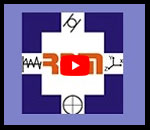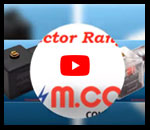Smart Technology isn’t Just for Packaging

Label and App Technologies Streamline in-house Operations
While many new labeling technologies track and trace packaged goods, label manufacturers and innovators are also finding ways to apply the same technologies to other areas of packaging, such as streamlining in-house organization, communication and tracking. Using a readily available combination of tools like mobile devices, low-cost/no-cost apps and the cloud, new forms of label-and-app tech are proving invaluable for managing safety documentation for Occupational Safety and Health Administration (OSHA) compliance; recording maintenance, repair and operations (MRO) activities; tracking in-house assets and more. These new tools are particularly useful for small and mid-sized facilities with limited budgets, as they are available at a nominal cost with no subscription fees and with no need for complex integration into larger enterprise-level systems.
Instant access to safety documentation
One of the biggest challenges for a packaging facility or any complex operation, is organizing and accessing critical safety documentation for OSHA compliance. Facility and safety managers often find themselves challenged with the sheer volume of recordkeeping for personnel, such as their individual safety training and clearances and their specialized training for equipment operation and material handling. Management is also charged with documenting safety inspections and routine maintenance completion for equipment and machinery, and they must produce documentation for all of this in the event of an OSHA inspection.
For smaller operations that have yet to invest in the tools and technology that help manage safety and maintenance, repair and operations (MRO) records efficiently, accessing documentation for an OSHA inspection often involves traveling to the home office and searching paper or digital records from this central location. Pulling a facility or safety manager off the production floor for this time-consuming task takes attention away from other activities that contribute to productivity. And, if proper documentation cannot be produced to demonstrate compliance, OSHA can shut down the operation and impose hefty fines. For Fiscal Year 2022, OSHA’s Top 10 Most Frequently Cited Standards included lockout/tagout, powered industrial trucks, and machinery and machine guarding violations.
The ability to keep accurate safety records for personnel, equipment and machinery and to organize and easily access those records is essential to the overall safety of a packaging operation and to maintaining OSHA compliance and uninterrupted operation - and this is where new technologies can help.
A super simple solution
To get started with label and app solutions, all that’s typically needed is a supply of preprinted labels, a mobile device like a phone or tablet and the associated app. Each label features a unique code, which is notably different from a QR code that’s not easily edited from the field. Instead, these new types of labels provide codes that can be linked to whatever information a user desires, and the information can be modified at any time and from anywhere. Using safety documentation tracking as an example, a facility or safety manager starts by placing a label on a piece of machinery, on an employee’s badge or even on materials and equipment. The manager then opens the corresponding app on their mobile device, scans the code on the label using their device’s camera feature and creates a new file within the app.
Once the new file is created, the manager and any other user with permission can add notes to the file, upload photos or documents, share links and videos, and tie whatever information they desire to that specific label. Some apps also capture a timestamp and geolocation each time the label is scanned.
All the information captured and uploaded to a label’s corresponding file is stored in the cloud, where it is then easily accessible in the event of an OSHA inspection. To locate equipment safety inspection records, for example, the user would simply scan the label on that piece of equipment to call up its documentation. No trip to the home office. No rummaging through files. These cloud-based solutions can be integrated into larger enterprise-level systems, or they can be used as a standalone tool, which is a big part of their attraction for small and mid-sized packaging operations.
In-house asset and material tracking
Because label-and-app technologies are inexpensive and easy to use, packaging operations can apply them to a variety of applications beyond safety documentation. For instance, many operations have a multi-building setup, wherein they move tools, equipment and materials from one location to another. To ensure these items arrive where they are expected and aren’t lost or misplaced in transit, managers can use labels and an app to track these in-house shipments and exchanges. If a skid of materials moves from a storage facility to the point of use in another building, for example, personnel can place a label on the skid, scan it to capture a timestamp and geolocation and send it on its way. When it arrives at its intended location, the recipient scans the label a second time to confirm its arrival with a new timestamp and updated geolocation. This is just one simple example of how label-and-app technologies can be applied. Because so much digital information in the form of documents, photos, audio files, video links and more can be associated with each unique label, the possibilities for other uses are virtually endless. Popular applications so far have included use by MRO teams for sharing repair records, maintenance checklists and instructions as well as by logistics for tracking in-house shipments from one site to another. Labels have also been used to upload training videos and operational instructions for site-specific tasks, tools and equipment.
Much More to Come
Mobile devices and cloud technology have been around long enough now that they are available to nearly everyone and affordable to use. As relationships between industries like label manufacturers and app designers continue to find common ground and connect through technology, more innovative new solutions for yet unsolved organizational & efficiency problems surely lie ahead.























